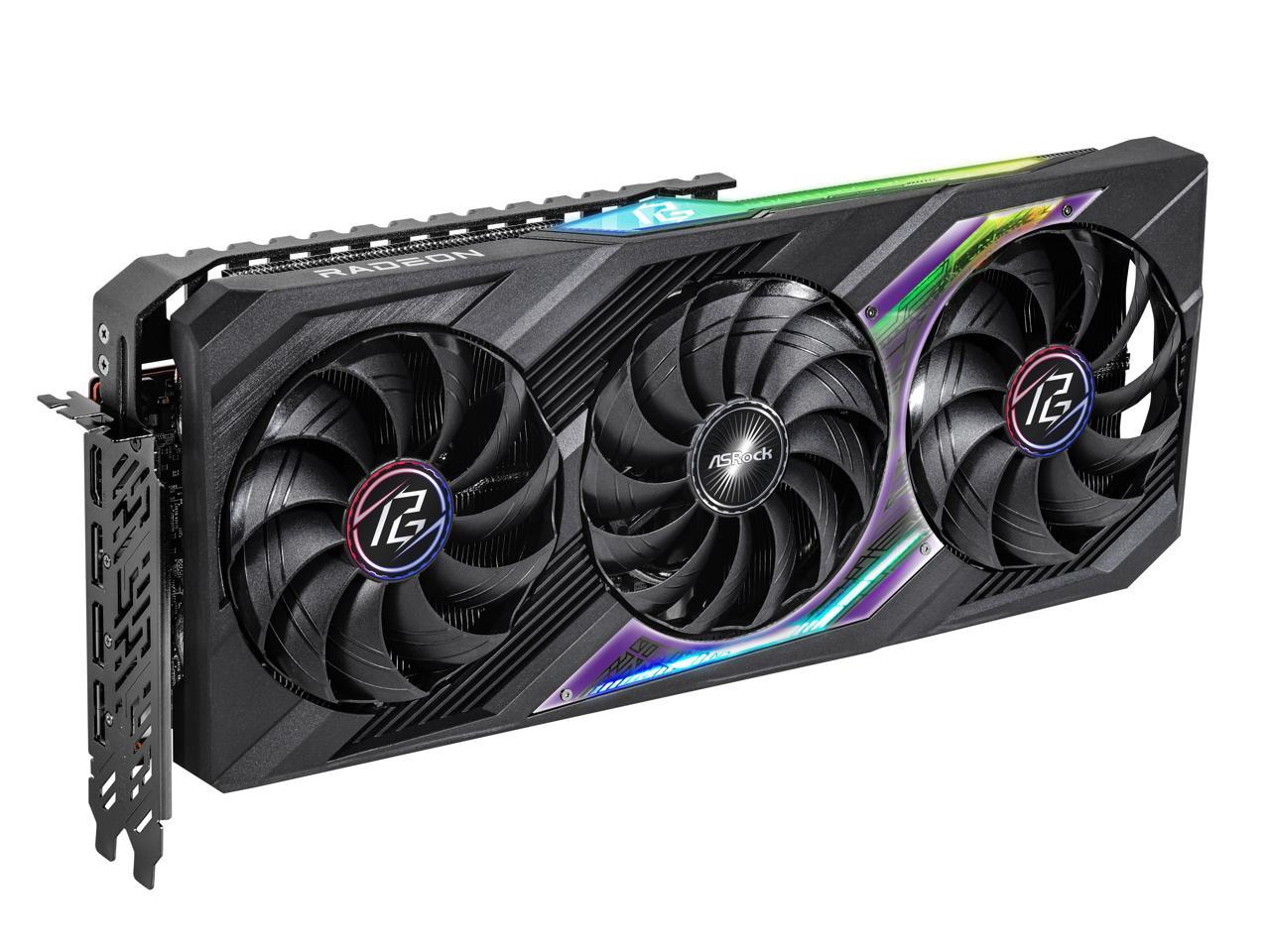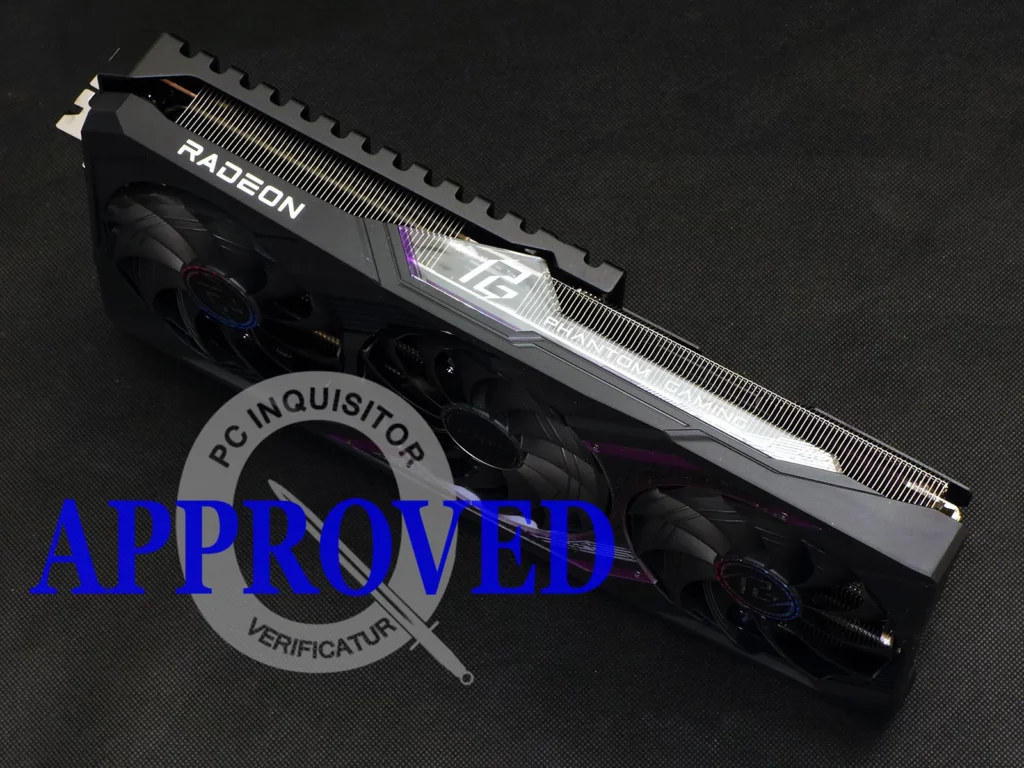ASRock RX 7700 XT Phantom Gaming 12GB OC Review
As with its RTX 4060 Ti rival, AMD’s RX 7700 XT is priced to lure the middle market segment with enough performance to consistently push more than 120 FPS at QHD resolution. Knowing that those kinds of details weren’t going to move many buyers, ASRock decided to give its Phantom Gaming edition a boost.
| ASRock RX 7700 XT Phantom Gaming 12GB OC (RX7700XT PG 12GO) | |
| Length | 328mm (+61mm) |
| Width | 140mm (+5mm) |
| Thickness | 53mm (+3mm) |
| Weight | 1290g (+180g) |
| GPU O/C | 2276MHz (+5%) |
| Boost O/C | 2599 (+2%) |
Of course it’s not a huge boost, because if the GPU were capable of supporting a huge boost AMD would have sold it upmarket for more money. However, the cooler is significantly longer than the one AMD designed, so it may just stay in boost a bit better.

AMD doesn’t use any of those fancy new 12VHPWR cables, so ASRock had no reason to include one of those dual-PCIe-power adapters that so many RTX cards now include. We instead plug two 8-pin cables just as we have in previous generations, and then choose from the single HDMI and/or three DisplayPort jacks to connect our monitor. With support for four monitors simultaneously, the decision might come down to which port to connect where (HDMI supports up to 12Gb/s, while DisplayPort goes up to 13.5Gb/s).
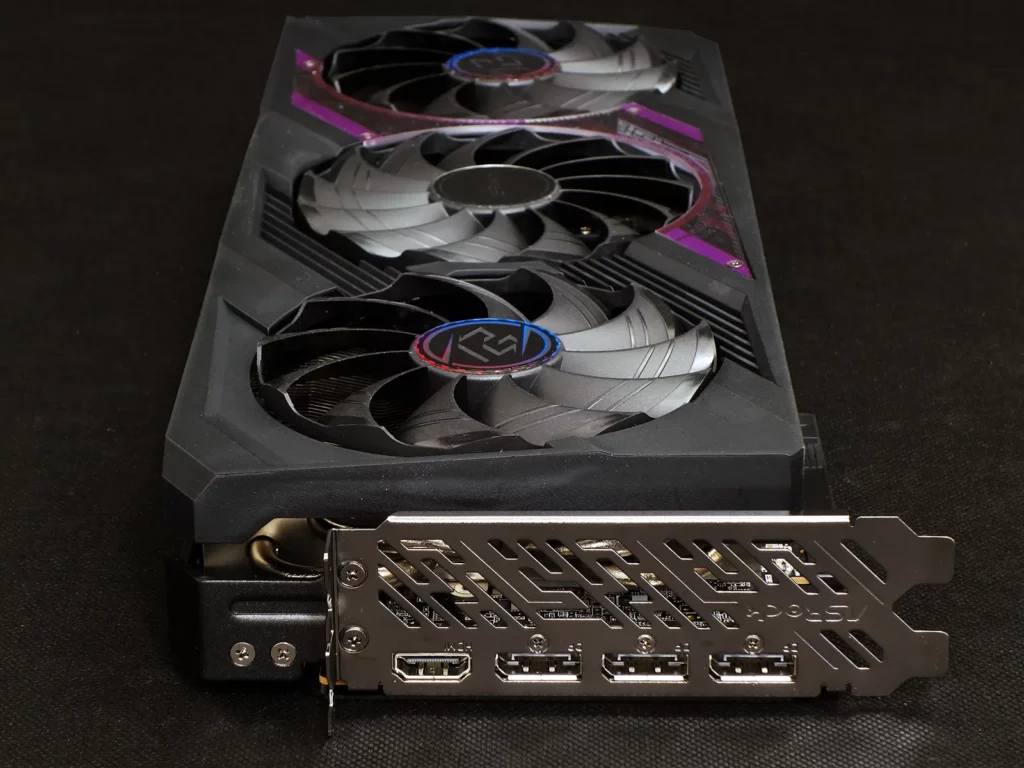
A microswitch next to those two 8-pin PCIe supplemental power cables allows users to disable the card’s onboard ARGB lighting if desired (click to enlarge). Other Phantom Gaming features include the RGB-refracting plastic edge cover and a vented back brace that runs roughly 2/3 the length of the card.

The front cover contains additional ARGB lighting, though it’s not easy to view directly since its lighting strip follows the edge of the view window. Notice also that the center fan is curved in the opposite direction of the others: ASRock does this to reduce turbulence.
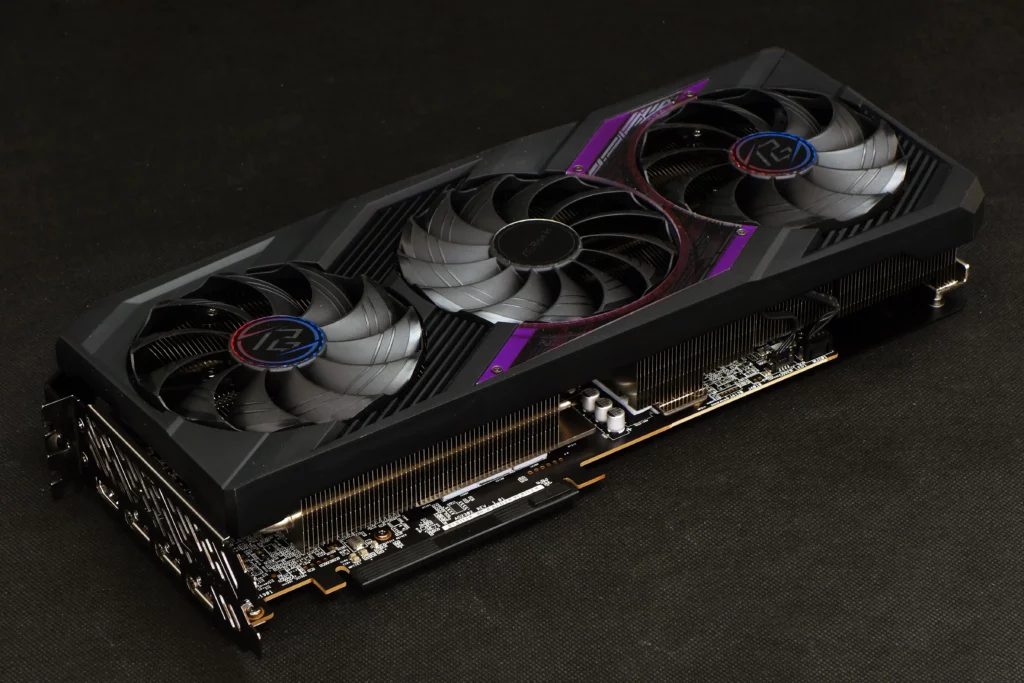
Lighting modes are well addressed by ASRock’s Polychrome Sync standalong lighting app: ASRock is also a motherboard maker, and some of its competitors could take a lesson from the firm about not combining their ARGB software into a resource heavy online tuning/gaming/sharing suite that most of us would refuse to install.
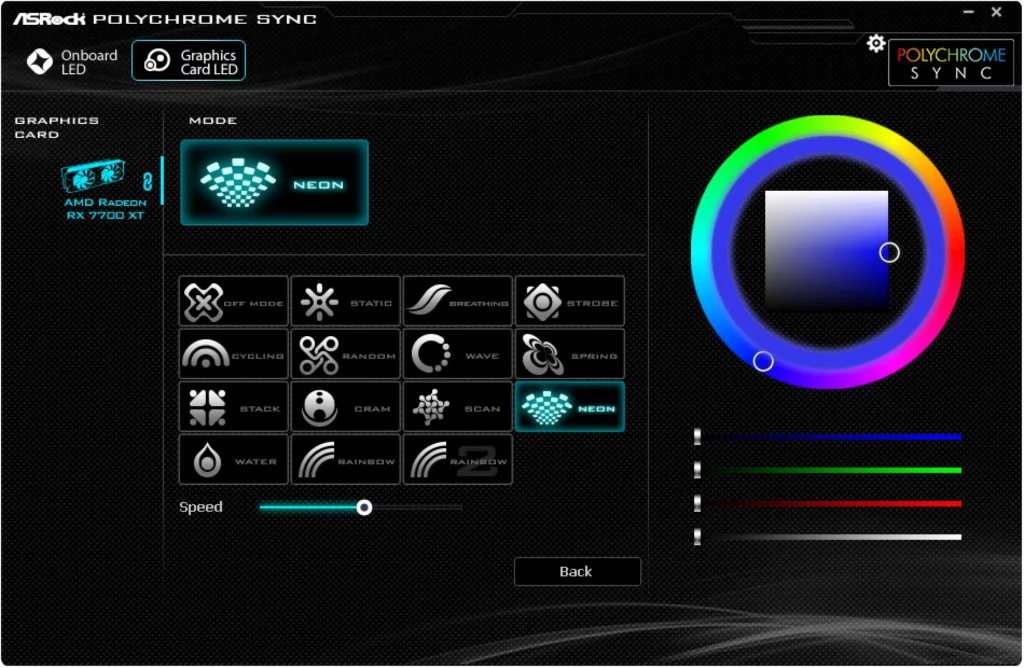
While some of you think that you’re going to eventually add an upright card adapter to your cases, we’re here to show what most of you will be looking at for the life of your initial RX 7700 XT Phantom Gaming 12GB OC build.

We mentioned that the baseline RX 7700 XT is priced to compete against the RTX 4060 Ti. It turns out that the closest card we could borrow to compare was a 4070 Ti, but at least the Phantom Gaming RX 770 XT still has a pricing advantage for us to consider in our final analysis.
| Phantom Gaming RX7700XT PG 12GO | PowerColor Red Devil RX 6750 XT 12GB | PNY GeForce RTX Verto 4070 Ti 12GB | |
| GPU | Navi 32 | Navi 22 | AD104 |
| ROPs/TMUs | 96 / 216 | 64 / 160 | 80 / 240 |
| Shaders | 3456 Unified | 2560 Unified | 7680 Unified |
| Pixel Fillrate | 249.5 GPixel/s | 167.9 GPexil/s | 208.8 GPixel/s |
| Texel Fillrate | 561.4 GTexel/s | 419.7 GTexel/s | 626.4 GTexel/s |
| Memory Size | 12GB GDDR6 | 12GB GDDR6 | 12GB GDDR6 |
| Memory Bus | 192 bits | 192 bits | 192 bits |
| Bandwidth | 432 GB/s | 432 GB/s | 504.2 GB/s |
| GPU Clock | 2276 MHz | 2553 MHz | 2310 MHz |
| Boost Clock | 2599 MHz | 2623 MHz | 2610 MHz |
| Memory Clock | 2250 MHz | 2250 MHz | 1313 MHz |

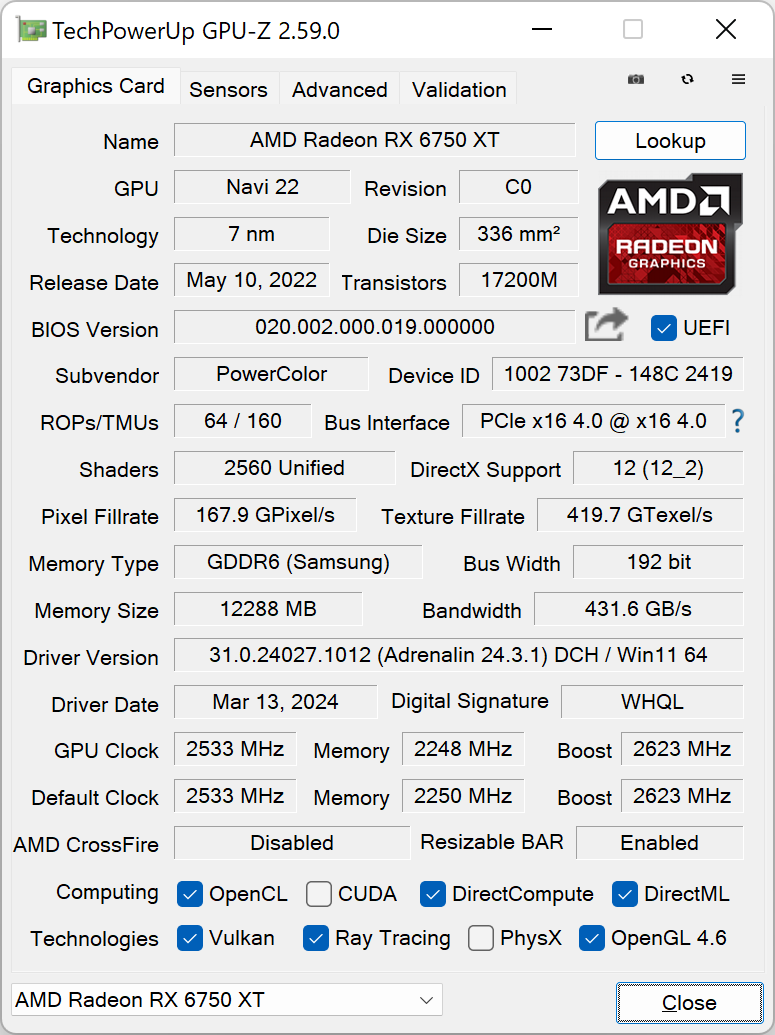

And here’s the humble machine that we’ll be using to benchmarking these stellar graphics cards:
| Test Hardware | |
| CPU | AMD Ryzen 9 7950X: 16C/32T 4.5-5.7 GHz, 64MB L3 Cache, Socket AM5 |
| CPU Cooler | Alphacool Core 1 Aurora, Eisbecher D5 150mm, NexXxoS UT60 X-Flow 240mm |
| DRAM | Lexar Thor OC DDR5-6000 32GB: XMP+EXPO C32-38-38-96 |
| Hard Drive | Crucial T700 2TB PCIe 5.0 M.2 SSD |
| Power | be quiet! Dark Power Pro 10 850W: ATX12V v2.3, EPS12V, 80 PLUS Platinum |
| Graphics Driver | AMD Adrenalin Edition 24.3.1 |
| Nvidia Graphics Driver | GeForce 551.85 (2024/03/19) |
Benchmark Results
We decided to warm up with some synthetic benchmarks before moving on to the gaming-FPS main event, beginning with Furmark since it’s being used to test power consumption anyway. The big revelation came in 3DMark, where improved CPU performance when paired with the RTX 4070 Ti appears to indicate lower CPU overhead for that GPUs Nvidia architecture. Moving on, the two-year-old RX 6750 XT seems particularly poorly suited for AIDA64’s GPGPU tests, but both Radeon cards compete well within their price margins in Unigine SuperPosition (we used FPS in its VR test since its point score was capped at 10k).


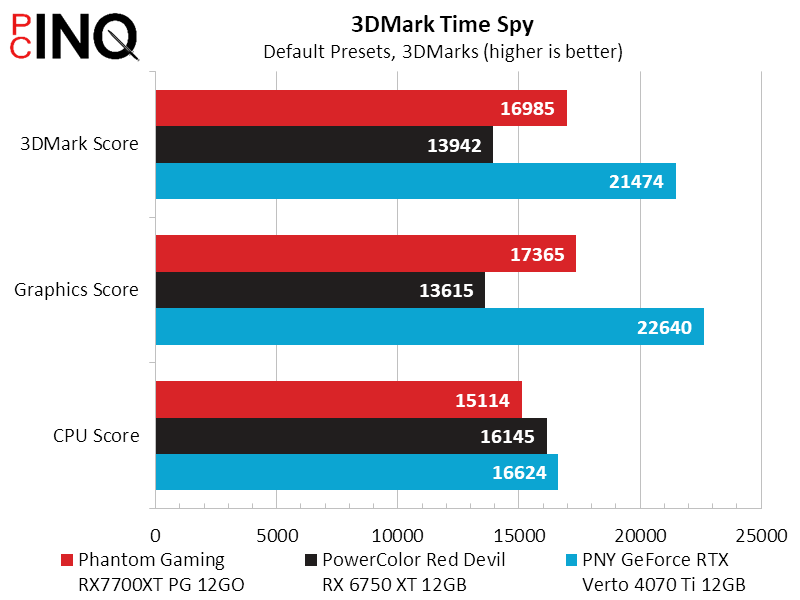

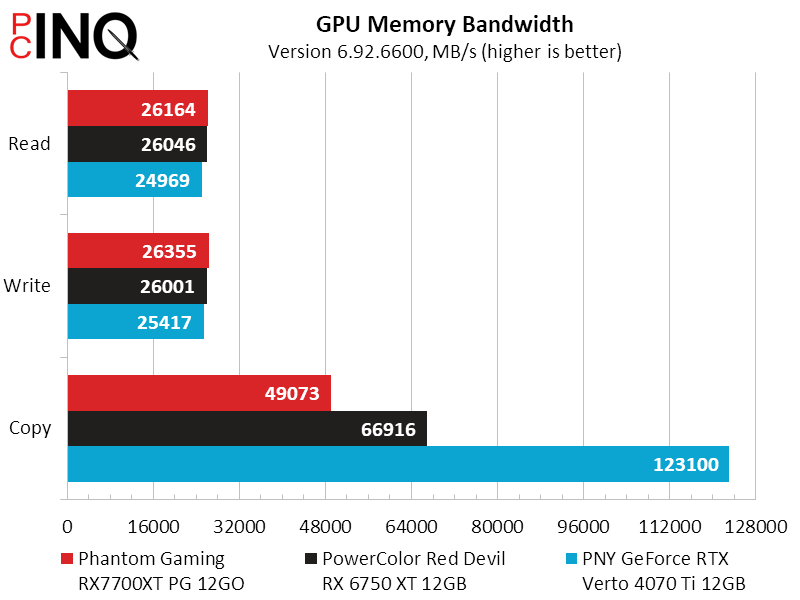


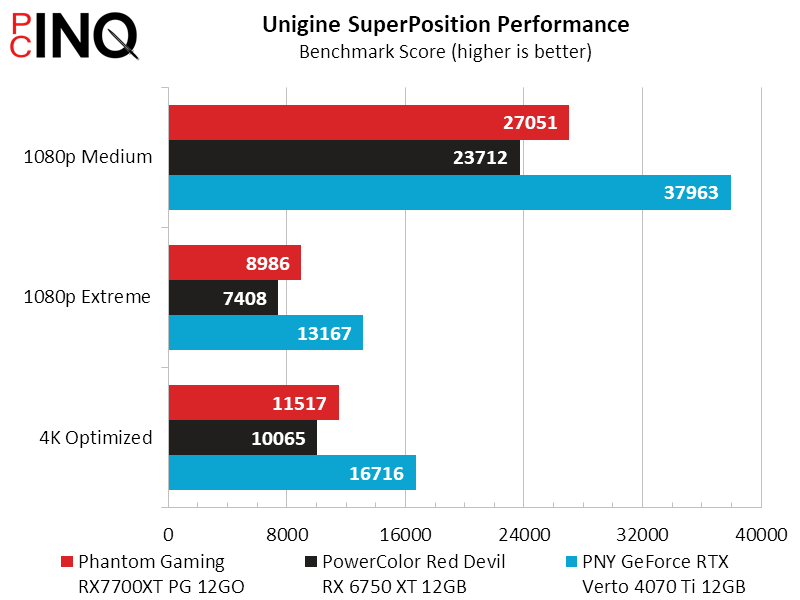

So, did the RX 7700 XT get us to 120Hz in 4k? Yes, if you turn your F1 2021 details down to Medium (maybe we should have tested high). If you’re an old-school player who settles for anything over 30 FPS, the 7700 XT approaching 60 look great.

CyberPunk 2077 shows us that you really want to treat the RX 7700 XT as a QHD solution in some of the heavier titles, though 4k at medium details is still playable by old-schoolers.

Ah, SOTTR. As a shadow of an old title, it even lets our old RX 6750 XT shred frames in QHD, only to fall flat at 4K regardless of hardware. OK, so old schoolers can probably tolerate 4k Highest, but anyone who wants to get even close to a consistent 120 FPS at 4K will want an even more-powerful solution…and a drop to medium details.

The RX 7700 XT has performed quit nicely for a mid-priced part, but we’re not seeing anything like a mid-level power number from it: The pricey 4070 Ti needs less than 5% more.
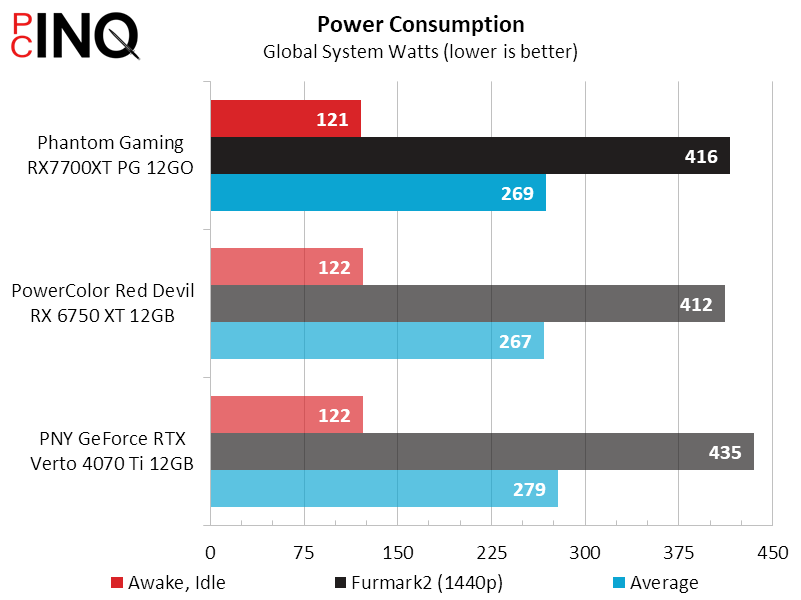

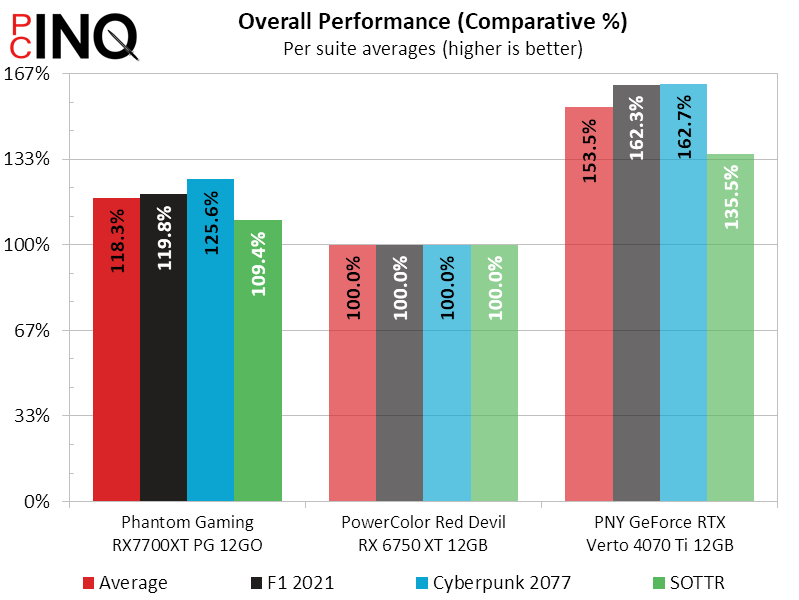
The pricey 4070 Ti’s modest power bump got it a big performance gain, making it a clear efficiency leader. On the other hand, the RX 7700 XT appears to have taken a giant step forward compared to the RX 6750 XT.

We finally get to the reason we keep mentioning the price difference: You see, the RX 7700 XT we tested costs less than the 6750 we tested, while the 4070 Ti costs 70% more.

None of that is going to make sense without dollar numbers, so the deal is that the Phantom Gaming RX 7700 XT was priced at only $410 (a $30 discount) while the Red Devli RX 6750 XT was still at $440 (all discounts expired). Meanwhile, the Verto 4070 Ti was marked up to $750.
Some may argue that the numbers aren’t reflective of the overall market, so we went and got those numbers too: A new 7700 XT goes for at least $380, a new 6750 XT for at least $320, and a new 4070 Ti for at least $680. Plugging those numbers into our chart gave us the 7700 XT and 6750 XT at equal value, with the 4070 Ti falling 28% behind. Ouch.
A value this great is going to get a product some kind of award, but since we haven’t tested enough similarly-priced cards to determine whether this is the best of the $400 segment, we can raise it no higher than to add our basic stamp of approval.
| ASRock RX 7700 XT Phantom Gaming 12GB OC | |
| Pros | Cons |
| Advances performance without increasing price Improved efficiency over previous generation Reinforced ARGB triple-fan cooler | Less efficient than competing architecture |
| The Verdict | |
| ASRock’s model RX7700XT PG 12GO builds upon the RX 7700 XT’s great value to deliver enhanced durability and aesthetic charm. | |

